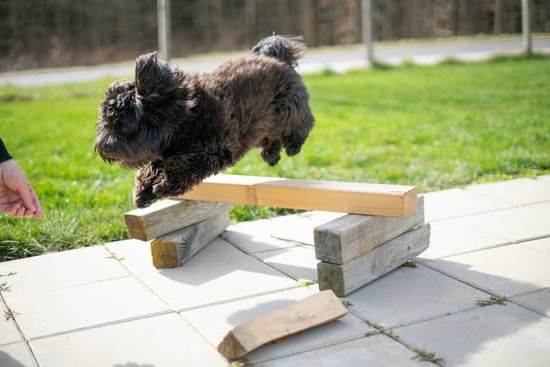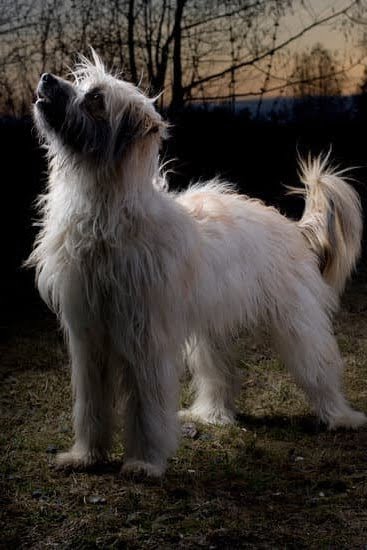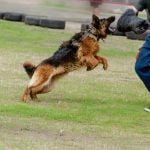Have you ever wondered how to train dogs to pull a sled? Dog sledding has a rich history, originating as a mode of transportation in regions with harsh winters. From the icy terrains of the Arctic to snowy landscapes, dog sledding has evolved into a recreational activity and competitive sport enjoyed by many.
The relationship between humans and dogs in dog sledding goes back centuries, with these loyal companions proving to be essential partners in navigating challenging environments. The bond created through training dogs to pull a sled not only showcases their physical abilities but also highlights their intelligence and willingness to work alongside their human counterparts.
In this article, we will explore the fascinating history of dog sledding, the importance of choosing the right breed with the appropriate characteristics and temperament for sled pulling, basic training methods to lay a strong foundation, as well as advanced techniques to improve endurance and speed. Additionally, we will discuss safety precautions to ensure the well-being of your canine companions while enjoying the thrill of dog sledding together.
Let’s embark on this exciting journey into the world of training dogs to pull a sled.
Choosing the Right Breed for Dog Sledding
When it comes to dog sledding, choosing the right breed is crucial for success. Not all dogs are suited for the demands of pulling a sled in various conditions. Certain characteristics and temperaments make some breeds more ideal for this activity than others. Here are some key factors to consider when selecting a breed for dog sledding:
- Size and Strength: Larger, stronger breeds such as Siberian Huskies, Alaskan Malamutes, and Samoyeds are commonly used for sled pulling due to their ability to handle the physical demands of this activity.
- Coat and Cold Tolerance: Dogs bred for cold climates with thick double coats, like those mentioned above, are better equipped to handle the frigid temperatures often associated with dog sledding.
- Endurance and Energy Level: Breeds with high levels of energy and endurance, such as Alaskan Huskies and Greenland Dogs, excel at long-distance sledding journeys without tiring quickly.
Training these specific breeds for dog sledding involves understanding their natural instincts and abilities. Knowing how to harness their energy and drive towards the task at hand is essential in creating a successful sled dog team capable of navigating various terrains and weather conditions effectively.
Overall, selecting a breed that aligns with the requirements of dog sledding is paramount in ensuring a safe and enjoyable experience for both you and your canine companions on your sledding adventures. By taking the time to research different breeds’ characteristics and temperaments, you can make an informed decision that sets the foundation for a fulfilling partnership in this exhilarating winter sport.
Basic Training
Training dogs to pull a sled can be a rewarding and thrilling experience for both you and your canine companions. However, before getting started, it is essential to build a strong foundation through basic training. Here are some key steps to consider:
- Start by establishing a solid obedience training regimen with your dogs. Basic commands such as “sit,” “stay,” and “come” are essential for sled pulling. Consistent training will help create a bond between you and your dogs, making it easier for them to understand your cues while sledding.
- Introduce your dogs to the equipment gradually. Begin by familiarizing them with the harness and gear in a positive and gentle manner. Allow them to sniff and inspect the equipment before gradually fitting it on them. This will help prevent any fear or anxiety related to the gear.
- Practice walking on-leash with the harness and gear before attaching them to the sled. This will help your dogs get used to the feeling of pulling weight behind them, preparing them for the actual sledding experience. Start with lightweight objects before progressing to heavier loads.
As you work on building this foundation for sled pulling, remember that patience and consistency are key. Each dog learns at their own pace, so be sure to praise and reward positive behavior throughout the training process. With time and dedication, you will be well on your way to training your dogs to pull a sled effectively.
In addition, seeking guidance from experienced dog sledders or trainers can provide valuable insights and tips on how best to train your dogs for this activity. Remember, safety should always be a top priority when engaging in dog sledding, so take the time to ensure that your dogs are fit, healthy, and ready for this exhilarating adventure.
Harness and Gear
Dog sledding requires the use of specific harnesses and gear to ensure the safety and efficiency of your canine team. When it comes to harnesses, there are different types available, such as x-back harnesses, shoulder harnesses, and sled dog harnesses. It is essential to choose a harness that fits your dog properly to prevent discomfort or injury while pulling the sled. Proper fitting ensures that your dogs can pull with ease and maintain good form throughout the run.
In addition to harnesses, other essential gear for dog sledding includes a sled or cart suitable for the terrain you will be traveling on, ganglines that connect each dog to the main towline, as well as booties to protect your dogs’ paws from snow and ice. The type of gear you need may vary depending on whether you are engaging in recreational sledding or competitive racing.
Investing in high-quality gear is crucial not only for your dogs’ comfort but also for their safety during sledding activities.
To properly train dogs to pull a sled, it is essential to introduce them gradually to wearing a harness and being connected to the gangline. Start by allowing them to become comfortable with the equipment before moving on to actual pulling exercises.
Positive reinforcement techniques such as treats and praise can be used to encourage your dogs during training sessions. Consistent practice and patience are key when teaching your canine companions how to work together as a team in pulling a sled.
| Harness Type | Usage |
|---|---|
| X-Back Harness | Ideal for evenly distributing weight across a dog’s body |
| Shoulder Harness | Suitable for larger breeds with strong shoulders |
| Sled Dog Harness | Designed specifically for pulling activities like sledding |
Sled Pulling Techniques
Establishing a Solid Foundation
Before delving into the specifics of sled pulling techniques, it is crucial to ensure that your dogs have a strong foundation in basic training. Obedience commands such as “sit,” “stay,” and “come” are essential for effective communication with your team of sled dogs. Consistent training and positive reinforcement play a significant role in building a harmonious relationship between you and your furry companions.
Introducing the Harness
One of the first steps in teaching dogs to pull a sled is getting them accustomed to wearing a harness. Start by introducing the harness to your dogs gradually, allowing them to sniff and inspect it before attempting to put it on.
Once they are comfortable with the harness, begin fitting it onto them while offering treats and praise for positive reinforcement. It is essential to ensure that the harness fits properly, as an ill-fitting harness can cause discomfort and hinder their performance.
Teamwork Makes the Dream Work
In dog sledding, teamwork is key to success. Teaching your dogs to work together as a cohesive unit involves practicing cooperative exercises such as group walks, side-by-side obedience training, and synchronized commands.
By reinforcing positive behaviors like staying in line, maintaining a steady pace, and responding promptly to cues, you can cultivate a sense of unity among your sled dog team. Remember that patience and consistency are vital when training dogs to pull a sled as they learn to trust each other and synchronize their movements for optimal performance on the trail.
Safety Precautions
Proper Conditioning and Health Check
Before hitting the trails with your sled dogs, it is crucial to ensure that they are in good physical condition. Regular exercise and conditioning are essential to prevent injuries and improve performance during sledding activities. Additionally, schedule regular check-ups with a veterinarian to monitor your dogs’ health and address any issues promptly. Keeping your sled dogs at a healthy weight will also reduce strain on their joints and muscles.
Hydration and Nutrition
Proper hydration and nutrition are key factors in maintaining the well-being of sled dogs. During sledding trips, make sure to provide access to clean water for your dogs to stay hydrated. Pack nutritious snacks or meals for them to refuel along the way.
It’s important to monitor their energy levels and adjust their food intake accordingly to meet the demands of pulling a sled. Consider consulting a vet or canine nutritionist for guidance on a balanced diet that supports your sled dogs’ activity levels.
Temperature Regulation and Paw Care
Sledding often takes place in cold environments, so it’s essential to protect your dogs from extreme temperatures. Invest in appropriate gear such as booties to keep their paws safe from frostbite or sharp ice. Monitor your dogs for signs of hypothermia or overheating, adjusting their breaks accordingly.
Regularly check their paws for cuts, abrasions, or signs of wear from running on rough terrain. Taking these precautions will help ensure the safety and comfort of your sled dogs during sledding adventures.
Advanced Training
When it comes to participating in sled pulling competitions, advanced training is key to improving your dogs’ endurance and speed. This type of training goes beyond the basic commands and techniques taught in the initial stages of sled pulling preparation. It focuses on building up your dogs’ strength, stamina, and teamwork abilities to excel in competitive events.
One important aspect of advanced training for sled pulling competitions is conditioning your dogs for longer distances and faster speeds. This involves gradually increasing the distance of your training runs and incorporating interval training to improve their cardiovascular health and endurance. By implementing a structured training program that includes both short sprints and longer runs, you can help your dogs build the muscular strength and aerobic capacity needed to perform well in competitions.
In addition to physical conditioning, advanced training also encompasses refining your dogs’ pulling techniques and reinforcing their ability to work together as a cohesive team. This may involve practicing specific commands for turning, stopping, or navigating obstacles during a run.
By consistently working on these skills during training sessions, you can enhance your dogs’ coordination and responsiveness when faced with challenging terrain or race conditions. Overall, advanced training plays a crucial role in preparing your canine companions for the demands of sled pulling competitions and maximizing their performance on race day.
Troubleshooting Common Issues
One common issue that dog sledding enthusiasts may face when training their dogs to pull a sled is pulling in different directions. This can happen when the dogs have not yet learned to work together as a team.
To address this challenge, it is crucial to focus on building a strong bond between the dogs and establishing clear communication with them. Encouraging teamwork through group training sessions and activities can help align the dogs’ movements and ensure they are all pulling in the same direction.
Another issue that trainers may encounter is resistance or reluctance from certain dogs to pull the sled. This could be due to a lack of confidence, fear of the sled or harness, or even physical discomfort. In such cases, it is important to approach training with patience and understanding.
Gradual desensitization to the equipment, positive reinforcement techniques, and providing a supportive environment can help build trust and confidence in reluctant dogs. Additionally, working with a professional trainer experienced in sled dog training can offer valuable insights and guidance on how to overcome this challenge effectively.
Furthermore, some dogs may exhibit behavior problems such as distractions, barking, or aggressiveness while on the trail. These issues can disrupt the harmony of the team and jeopardize the safety of both the dogs and the musher. To troubleshoot these common issues, it is essential to identify the underlying causes of these behaviors and address them accordingly.
Implementing consistent training routines, rewards for good behavior, and appropriate corrective measures can help modify unwanted behaviors over time. Patience, consistency, and positive reinforcement are key elements in successfully addressing behavioral challenges in training dogs to pull a sled.
| Common Issue | Troubleshooting Strategies |
|---|---|
| Pulling in Different Directions | Focus on teamwork through group training sessions; Build a strong bond between dogs |
| Resistance/Reluctance to Pull Sled | Gradual desensitization; Positive reinforcement techniques; Supportive environment; Consultation with professional trainer |
| Behavior Problems on Trail | Identify underlying causes; Implement consistent training routines; Rewards for good behavior; Corrective measures |
Conclusion
In conclusion, dog sledding is not just a recreational activity but also a journey filled with historical significance and rich traditions. From the Inuit people in the Arctic regions to modern-day sled dog races, the bond between humans and their canine companions has been truly remarkable. By understanding the fascinating history of dog sledding and choosing the right breed with the necessary characteristics and temperament, individuals can embark on this thrilling adventure with their furry friends.
Training dogs to pull a sled requires patience, consistency, and a strong foundation in basic obedience. It is essential to invest time in harnessing and gear selection, as well as teaching sled pulling techniques that emphasize teamwork among your pack. Safety precautions should always be a top priority to ensure the well-being of your dogs during sledding expeditions, while advanced training can improve endurance and speed for those interested in competing or taking their skills to the next level.
As you dive into the world of dog sledding, remember that challenges may arise along the way. However, by troubleshooting common issues that may arise during training sessions, you can overcome obstacles and strengthen your bond with your canine companions.
Embrace the thrill of dog sledding as a rewarding activity not only for yourself but also for your dogs who will undoubtedly enjoy being part of this adventurous experience. So gather your team, hit the trails, and enjoy the exhilarating ride ahead.
Frequently Asked Questions
Can I Teach My Dog to Pull a Sled?
Teaching a dog to pull a sled can be possible with the right training, patience, and guidance. It is important to start with basic obedience commands and gradually introduce them to pulling weight on a sled.
What Kind of Dog Is Best for Pulling a Sled?
The best kind of dog for pulling a sled is typically a breed that has a history of working or pulling activities, such as Siberian Huskies, Alaskan Malamutes, Samoyeds, or Greenland Dogs. These breeds have the strength, endurance, and desire to pull sleds effectively.
How Old Should a Dog Be Before Pulling a Sled?
It is generally recommended that a dog should be at least one year old before starting to pull a sled. This allows their bones, muscles, and joints to develop properly before engaging in strenuous physical activity like pulling heavy weights on a sled.
It’s crucial to ensure the dog’s well-being and prevent injuries by waiting until they are physically mature enough to handle the demands of sledding.

Welcome to the blog! I am a professional dog trainer and have been working with dogs for many years. In this blog, I will be discussing various topics related to dog training, including tips, tricks, and advice. I hope you find this information helpful and informative. Thanks for reading!





